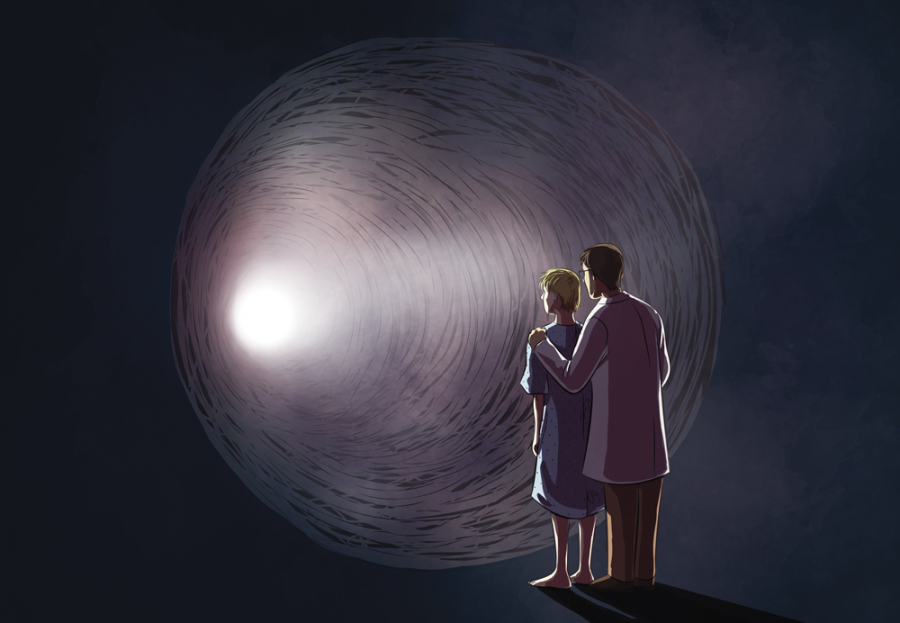The right to die: California law grants patients end of life options
June 29, 2016
In Oct. 2015, California voters passed the End of Life Option Act that Gov. Jerry Brown signed into law. That law went into effect on June 9, which grants terminally ill California residents the option to end their own lives. California joins Montana, Oregon, Vermont and Washington as the fifth state to pass this law.
In a statement that accompanied the bill, Gov. Brown said, “I do not know what I would do if I were dying in prolonged and excruciating pain. I am certain, however, that it would be a comfort to be able to consider the options afforded by this bill. And I wouldn’t deny that right to others.”
The California State Senate and Assembly passed the bill in Sept. 2015, which according to the document, allows terminally ill patients to take a combination of deadly medications to end their lives; however, there are stipulations. Patients must have been given six months or less to live by two separate doctors and provide a written request and two verbal requests for the medication at least 15 days apart. They must also be diagnosed as mentally capable of making decisions about their health by a medical professional.
The bill also allows doctors and hospitals to choose whether or not they will offer this service to patients and so far both Kaiser Permanente and Sutter Health have confirmed that they will. Non-profit organizations, Death with Dignity, in collaboration with other organizations like Compassion & Choices, have put the pressure on lawmakers since the case of Brittany Maynard garnered some national attention in 2014.
Maynard was a 29-year-old California resident who inspired the movement in California when she was forced to move to Oregon in order to qualify for the Death With Dignity Law after she was diagnosed with brain cancer on New Year’s Day 2014. She was initially given just a few years to live, however, an April MRI revealed it was worse than doctors predicted and she was given six months to live.
“I am heartbroken that I had to leave behind my home, my community and my friends in California,” Maynard said in a video message two weeks before her death. “But I am dying and I refuse to lose my dignity. I refuse to subject myself and my family to purposeless and prolonged suffering at the hands of an incurable disease.”
Enter Lonny Shavelson, a 29-year physician of emergency rooms throughout the Bay Area, including Oakland and Berkeley. For more than 20 years, Dr. Shavelson has been on the pulse of the assisted suicide topic. In 1995, he authored a book titled “A Chosen Death,” in which he documented the lives of five terminally ill people over two years, contemplating if they should illegally take their own lives.
Dr. Shavelson said after experiencing the lives of the terminally ill individuals in his book, “I made the decision that I wanted to penetrate the what I soon started calling the darkened bedrooms of assisted suicide, by family members, by people dying and by what I found were some freelance euthanasia people who just took it upon themselves that they liked this idea and made it their business.”
Dr. Shavelson founded Bay Area End Of Life Options, based in Oakland, in response to the new law and will to, “open up a practice that will have its sole focus on educating physicians, consulting with physicians who want to participate and then if there is a patient who cannot find a doctor that will work with them I will accept that patient and become their attending physician at the end of life.”
However, Dr. Shavelson said this will not directly lead to ingesting any medication and instead will lead to a process of considering all options available to the patient.
“My goal isn’t to end people’s lives,” Dr. Shavelson said. “I want to figure out the best possible end of life care for people. People can’t just say I want to die, we need to examine all of the options before that decision is made.”
Dr. Shavelson said he has talked to several physicians who have expressed discomfort and a desire to not participate in this, however he feels that many will eventually become comfortable enough with it to respect what the patient wants.
“I tell doctors, were you always comfortable with performing surgeries?” Dr. Shavelson said. “No you weren’t, but you got there and somebody taught you because it is something patients need.”
















